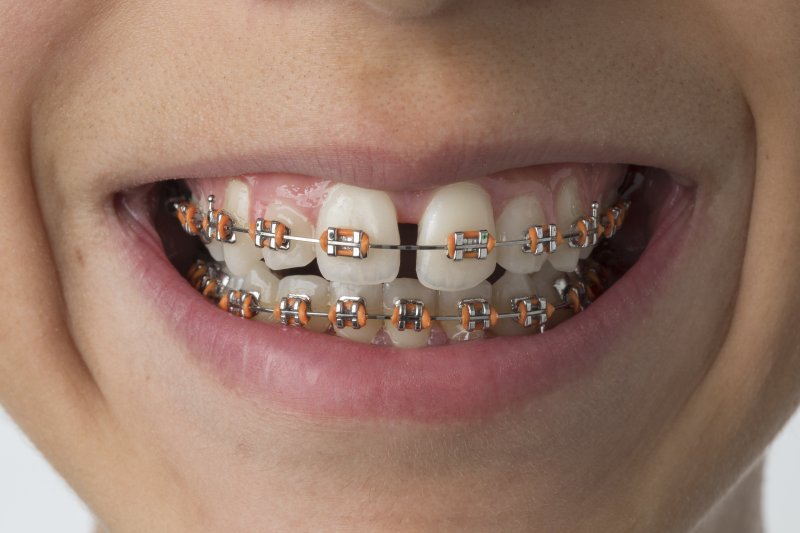
Whenever your braces are damaged or are causing you pain, it goes without saying that your orthodontist should always be the first person you call. However, due to COVID-19, you may not be able to make an orthodontics appointment right away if the issue doesn’t rise to the level of emergency. Fortunately, they can still give you advice for handling the issue over the phone or through video communication. In the meantime, you can read on to learn treatment strategies for common problems that might occur while you’re wearing braces.
Orthodontic Discomfort
Of course, if you’ve already been wearing braces for a while, you should be no stranger to mild discomfort that lasts for a couple of days after each adjustment. If you need help managing it, you can try taking acetaminophen or another pain reliever. Call your orthodontist if the pain lasts longer than usual or grows worse.
Mouth Sores and Irritation in the Mouth
Braces shouldn’t cause any permanent damage in your mouth, but they can sometimes irritate the soft tissues within. An occasional sore is not an emergency; you can find relief simply by placing topical anesthetic such as Ora-Gel to the area. If it doesn’t seem to go away, ask your orthodontist for their advice. In the meantime, you can place dental wax over the brackets and wires that are rubbing up against the mouth.
Protruding Wire
Normally, the wire will be held safely in place so that the ends do not come in contact with any soft tissues inside your mouth. However, there are cases where it can work itself loose and start poking you in the gums. To keep yourself as comfortable as you can until you can visit your orthodontist, press the wire flat against the tooth; if that doesn’t help, it’s a good idea to cover it with wax instead.
Lost O Ring or Ligature
The “O ring” is what keeps the orthodontic wire attached to the brackets; it usually takes the form of a tiny rubber band. A lost O ring needs to be put back in place as soon as possible. You may be able to do this yourself with disinfected tweezers. Occasionally, your braces might use a thin wire called a ligature instead of an O ring. If a ligature comes loose, it’s better to use your tweezers to try and remove it altogether before getting in touch with your orthodontist.
Do not panic if you’re not able to make an appointment right away to solve a problem with your braces. As long as you follow your orthodontist’s instructions over the phone and take care not to let the damage spread any further, you can keep your treatment on track and avoid any further discomfort.
About the Author
Dr. Stan Drabik has been working as an orthodontist for well over two decades. His Webster practice, Drabik Orthodontics, remains dedicated to protecting the health of all patients during the developing COVID-19 situation. If you or your child experiences an orthodontic emergency, call Dr. Drabik immediately at (585) 872-4660; you can also get in touch with the practice through their website.

